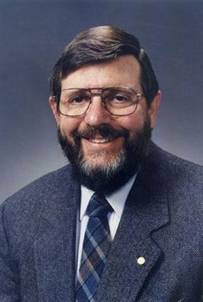应理学院院长李福利教授邀请,1997年诺贝尔物理学奖获得者,美国国家标准和技术研究所、马里兰大学William D. Phillips 教授,在我校建校120周年暨迁校60周年校庆期间来校访问交流。
讲座题目:Pushing and Twisting Atoms with Light
讲座时间:2016年4月6日下午16:30-18:00
讲座地点:基础学科大楼二楼大会议室
摘要:Physicists have used light and its polarization to connect to the internal state of atoms since the 19th century. Early in the 20th century, the momentum of light was used to manipulate the center-of-mass motion of atoms. The latter part of the 20th century brought optical pumping, coherent laser excitation, and laser cooling and trapping as tools to affect both the internal and external states of atoms. Bose-Einstein condensation created atomic samples having laser-like deBroglie-wave coherence, and atom optics techniques like Bragg diffraction provided coherent mirrors and beam splitters for the coherent atoms. Recently, an extension of Bragg diffraction, using light beams with orbital angular momentum (angular momentum associated not with the optical polarization, but with the shape of the spatial mode), provided a new tool for coherent manipulation of atomic motion, creating coherent rotation of atom clouds, and persistent flow of superfluid atoms in toroidal traps. In the latest experiments, we have created an “atomtronics” circuit with an interesting circuit element.
 报告人简介:Prof. William Daniel Phillips received his physics doctorate from the Massachusetts Institute of Technology in 1976. In 1978 he joined National Institute of Standards and Technology (NIST). In 1997, he shared the Nobel Prize in Physics, with Steven Chu and Claude Cohen-Tannoudji. Prof. William D. Phillips has studied and advanced the scientific art of supercooling atoms for trapping and examination. Cooling slows the speed of atoms' movements, and extreme cooling to near absolute zero allows the atomic structure of gases to be slowed and trapped without having the gas condense and liquefy or solidify. Phillips' results were so remarkable and far beyond what physicists thought would be feasible.
报告人简介:Prof. William Daniel Phillips received his physics doctorate from the Massachusetts Institute of Technology in 1976. In 1978 he joined National Institute of Standards and Technology (NIST). In 1997, he shared the Nobel Prize in Physics, with Steven Chu and Claude Cohen-Tannoudji. Prof. William D. Phillips has studied and advanced the scientific art of supercooling atoms for trapping and examination. Cooling slows the speed of atoms' movements, and extreme cooling to near absolute zero allows the atomic structure of gases to be slowed and trapped without having the gas condense and liquefy or solidify. Phillips' results were so remarkable and far beyond what physicists thought would be feasible.
Phillips has worked at the NIST for his entire career, and also was an adjunct professor at the University of Maryland College Park since 1992. In addition to his Nobel Prize winning work, he has studied atomic-gas Bose-Einstein condensates, atomic physics analogs of condensed matter systems, atoms in coherent deBroglie-wave atom optics, collisions of ultracold atoms, the magnetic moment of the proton in H2O, matter that exists only under extreme cold conditions, optical lattices, optical tweezers, quantum information with single-atom qubits, and ultracold Rydberg atoms and plasmas.